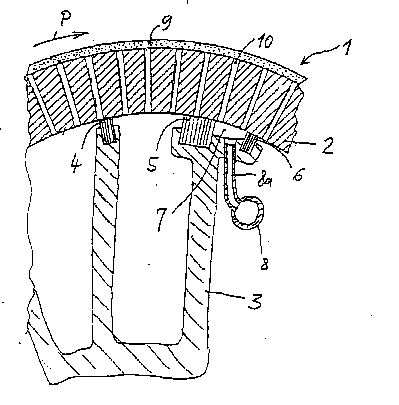Some of the information on this Web page has been provided by external sources. The Government of Canada is not responsible for the accuracy, reliability or currency of the information supplied by external sources. Users wishing to rely upon this information should consult directly with the source of the information. Content provided by external sources is not subject to official languages, privacy and accessibility requirements.
Any discrepancies in the text and image of the Claims and Abstract are due to differing posting times. Text of the Claims and Abstract are posted:
| (12) Patent Application: | (11) CA 2174465 |
|---|---|
| (54) English Title: | NOISE REDUCTION FOR SUCTION ROLL OF A PAPER MACHINE |
| (54) French Title: | METHODE POUR LA REDUCTION DU BRUIT PRODUIT PAR LE ROULEAU ASPIRANT D'UNE MACHINE A FABRIQUER LE PAPIER |
| Status: | Deemed Abandoned and Beyond the Period of Reinstatement - Pending Response to Notice of Disregarded Communication |
| (51) International Patent Classification (IPC): |
|
|---|---|
| (72) Inventors : |
|
| (73) Owners : |
|
| (71) Applicants : |
|
| (74) Agent: | MARKS & CLERK |
| (74) Associate agent: | |
| (45) Issued: | |
| (22) Filed Date: | 1996-04-18 |
| (41) Open to Public Inspection: | 1996-10-20 |
| Availability of licence: | N/A |
| Dedicated to the Public: | N/A |
| (25) Language of filing: | English |
| Patent Cooperation Treaty (PCT): | No |
|---|
| (30) Application Priority Data: | ||||||
|---|---|---|---|---|---|---|
|
A suction roll for a paper machine or the like
including a perforated annular roll shell which is
rotatable. A stationary suction box inside the roll
shell with respect to which the shell rotates. The
suction box is defined between two circumferentially
spaced sealing ledges at the roll shell. A noise
dampening chamber on the downstream side of the suction
box defined by a further sealing ledge at the roll shell.
A conduit communicating to the noise damping chamber to
allow increased pressure in the chamber which reduces
noise. At least one of a snifter valve, a suction
blower, an air pump and a water pump communicating to the
conduit for selectively adjusting the pressure in the
noise damping chamber for damping roll noise.
Note: Claims are shown in the official language in which they were submitted.
Note: Descriptions are shown in the official language in which they were submitted.

2024-08-01:As part of the Next Generation Patents (NGP) transition, the Canadian Patents Database (CPD) now contains a more detailed Event History, which replicates the Event Log of our new back-office solution.
Please note that "Inactive:" events refers to events no longer in use in our new back-office solution.
For a clearer understanding of the status of the application/patent presented on this page, the site Disclaimer , as well as the definitions for Patent , Event History , Maintenance Fee and Payment History should be consulted.
| Description | Date |
|---|---|
| Inactive: IPC from MCD | 2006-03-12 |
| Time Limit for Reversal Expired | 2001-04-18 |
| Application Not Reinstated by Deadline | 2001-04-18 |
| Deemed Abandoned - Failure to Respond to Maintenance Fee Notice | 2000-04-18 |
| Application Published (Open to Public Inspection) | 1996-10-20 |
| Abandonment Date | Reason | Reinstatement Date |
|---|---|---|
| 2000-04-18 |
The last payment was received on 1999-03-29
Note : If the full payment has not been received on or before the date indicated, a further fee may be required which may be one of the following
Patent fees are adjusted on the 1st of January every year. The amounts above are the current amounts if received by December 31 of the current year.
Please refer to the CIPO
Patent Fees
web page to see all current fee amounts.
| Fee Type | Anniversary Year | Due Date | Paid Date |
|---|---|---|---|
| MF (application, 2nd anniv.) - standard | 02 | 1998-04-20 | 1998-04-07 |
| MF (application, 3rd anniv.) - standard | 03 | 1999-04-19 | 1999-03-29 |
Note: Records showing the ownership history in alphabetical order.
| Current Owners on Record |
|---|
| VOITH SULZER PAPIERMASCHINEN GMBH |
| Past Owners on Record |
|---|
| ADALBERT HIRSCH |
| HANS PRINZING |